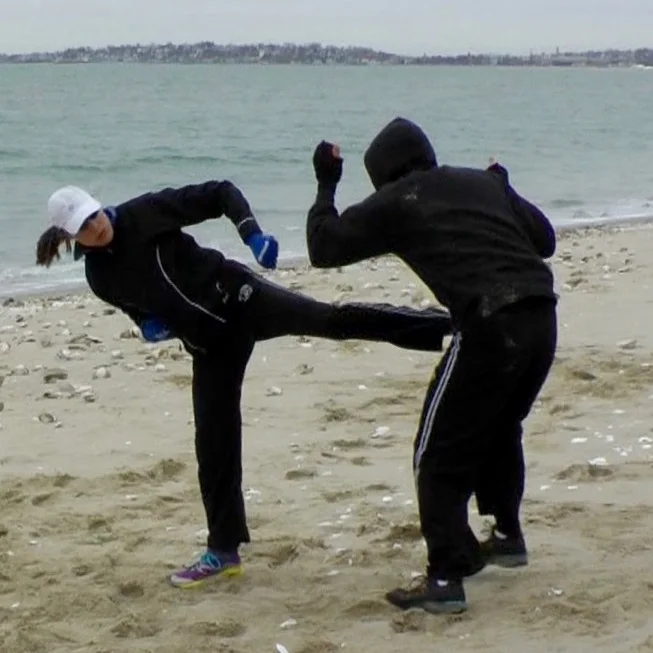Physical attacks, while increasingly rare, can be sudden and intensely violent. To fend off this type of unexpected, predatory attack, you must instantly switch to the most aggressive, brutal part of yourself to survive. Fighting like a wet cat (or a cornered cat, as one blogger describes) might be the only way to save your life.
However, it can be extremely challenging to instantly become fierce and aggressive if you’ve never practiced this. In fact, it is one of biggest challenges we see in our workshops and classes with women. Some women really struggle to find their aggressive selves.
Why?
For one, it’s human nature for men and women to deny a traumatic event is happening. As Amanda Ripley discovered in her research for The Unthinkable: Who Survives When Disasters and Why, our brains try to create a story that fits with a more normal experience. When confronted with disaster (and what is an attack but a very horrible personal disaster?), we first deny that the experience is happening. Then, we move into a deliberation phase where we try to figure out what exactly is happening. And, finally, we decide how to respond—either to take action by running or fighting, or, just as likely, to shut down and go numb. This sequence is true for everyone—trained and untrained alike. The difference is, trained people move through the sequence more quickly and react in a way more consistent with how they’ve trained. The untrained react much more slowly. In a physical attack, time is critical, and fighting back effectively is essential. We must respond quickly and aggressively to survive.
Secondly, though our modern culture is becoming more accepting of female power and anger, we still live in a society that teaches women and girls to be nice, friendly, accommodating, and polite. Often, women never practice being assertive, let alone aggressive. Many attackers will take advantage of this tendency in women.
Finding Our Inner Aggression
So, how do we learn to go from our normal, nice selves to a ferocious fighter in an instant? Just like how you get to Carnegie Hall. Practice, practice, practice.
Consistent practice is necessary to train the body and mind to respond appropriately under extreme stress. One of my instructors once told me, “Under stress, we fall to the level of our training.” This means that we will do exactly what we’ve trained to do when we encounter a stressful attack. If you haven’t trained at all, nothing is likely what you will do. It can be very, very difficult to respond how we want to unless we’ve practiced—at least mentally and ideally physically, as well.
Take a self-defense course, or, better yet, multiple courses. Train regularly in a realistic form of fighting or martial art (obviously, I’m partial to Krav Maga). Make sure that the training involves tapping into that fighter deep inside you. (It’s there. Your ancestors had to have it for you to even exist.) Also, make sure the course involves safe training in how to defend against realistic attacks, which are sudden and often unexpected.
If you can only take a self-defense workshop once in a while and can’t train regularly, visualization can help. Yes, thinking about responding to violence can be uncomfortable and unpleasant, but, again, it’s better to think about what you would do before something happens to you. Take a moment right now to think about how you would respond in the following situation.
You are out walking or running on a public, wooded trail. It is a sunny afternoon. There aren’t many other people in the park, but there are a few. You are listening to music on your earbuds, but you still make out faint sounds of footsteps coming up behind you. This is normal, as there are often other runners on the trail. Suddenly, you are pulled violently by your shirt and fall to the ground. You hit hard and land on your back. A man in with a hooded sweatshirt pulled over his face tries to kick you in the head and torso.
How could you be more alert and have potential warning of this attack? Once you hit the ground, what would you do? How would you protect your head and torso from the assailant’s kicks? Would you scream or yell? If so, what would you yell? How would you fight back against your attacker?
Another trick that we find helpful, is for women to imagine someone harming their children or a family member. Often, women can summon more protective “mama bear” feelings for their children than they can for themselves. Again, it’s painful to think about someone harming your kids, but think about it and see the aggressive and protective feelings manifest. Learn how to access these feelings now and not when something bad happens.

